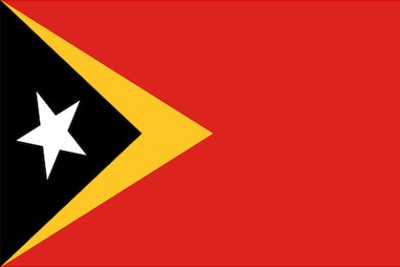Timor-Leste
COUNTRY INFORMATION
Region: Southeast Asia
Population: 1,343,875
Capital: Dili
GDP (Million US$): 1,959
Disaster Risk Profile: The climate is tropical, hot and humid, and it is affected by the West Pacific Monsoon. The wet season is from December to April and the dry season lasts for six months, between June and October
Inform Risk Rating: 4

Risk Summary
- Prone to earthquakes, tsunamis, landslides, floods, cyclones and locust infestation. Timor Leste is also vulnerable to food shortages and agricultural challenges - Earthquakes, though not frequent, have an offsetting effect in landslides causing further damage to livestock, property, infrastructure and roads - Floods, occurring in both monsoon seasons, are the most frequent and deadly disasters
Organizational Structure for Disaster Management
Inter-Ministerial Commission for Disaster Management (CIGD)The CIGD, made up of multiple government ministries and agencies, is in charge of conducting annual reviews of national DRR policies and development; providing technical and policy advice and resource support to the National Disaster Coordinator; as well as assigning responsibilities on disaster risk management to relevant departments. The CIGD also carries out any disaster risk reduction-related tasks set by the Minister or Secretary of State. National Disaster Management Directorate (NDMD)The NDMD is responsible for coordinating disaster risk management and providing technical support the government and community. The NDMD is also the focal point for providing initial reports on emergencies and disasters and maintaining National Disaster Risk Management Information System. It is supported by the National Disaster Operation Centre (DOC), responsible for disseminating information and developing organizational structure at district, sub-district and sucos levels. District Disaster Management Committee (DDMC)The DDMC, headed by the District Disaster Coordinator (DDC), and is responsible for coordinating financial resources for district level disaster response. Sub-District AdministratorThe SDA is responsible for emergency and DRR activities at the district level. Suco Chief/Village LeadersThe Suco Chief and Village leaders hold responsible for emergency and disaster risk reduction activities.
National Disaster Management Policy and Plans
National Disaster Risk Management Policy defines the government’s approach to disaster risk management. The policy enables people to be more prepared and participative in their prevention of disasters and disaster risk management. 2011 – 2030 Strategic Development Plan is used to guide Timor Leste to a middle-income country by 2030. The plan focuses on developing core infrastructure, human resources and strength of society. 2010 National Adaptation Program of Action (NAPA) for Climate Change provides an overarching vision to make Timorese people more resilient to climate change through implementing adaptation measures focused on reducing the impacts of climate change and promoting sustainable development.
NDMO
Ministry of Social Solidarity Find out more
